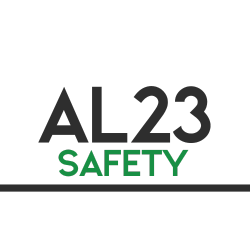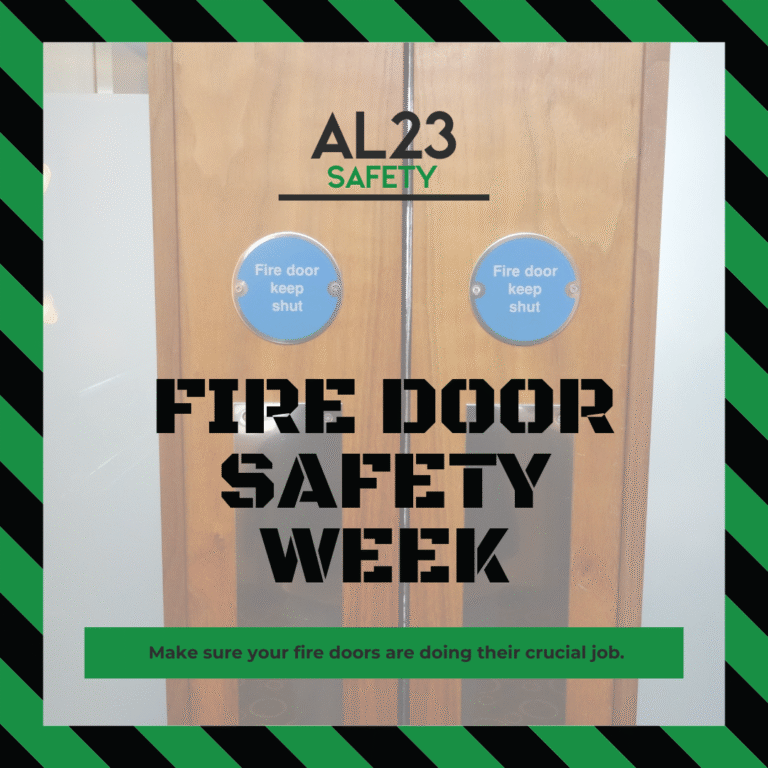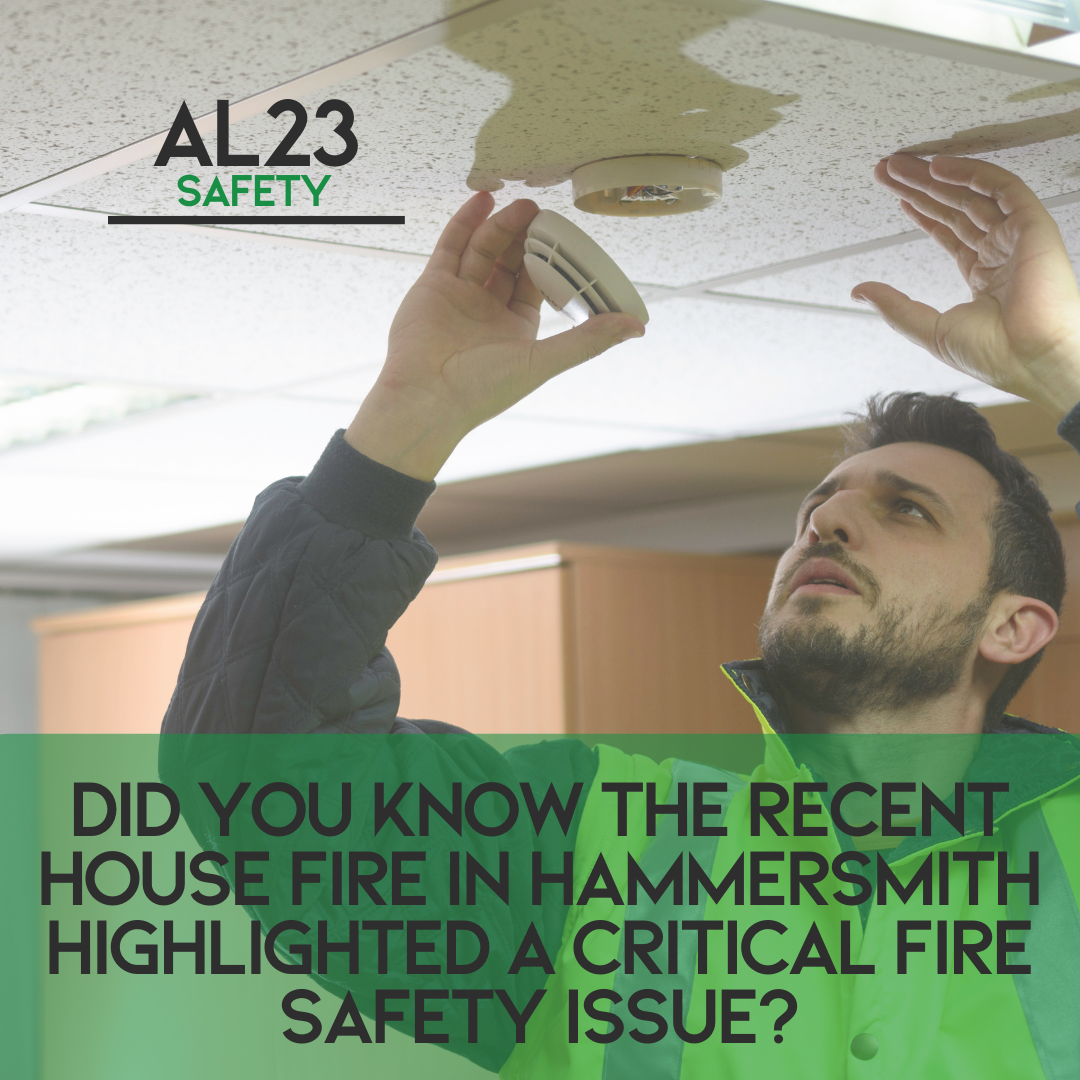Fire door safety is a critical aspect of workplace protection in the UK, ensuring lives and properties are safeguarded during emergencies. At AL23 Safety, we emphasise that proper fire door compliance starts with understanding its role in preventing the spread of fire and smoke, allowing safe evacuation and protecting vital infrastructure. This is especially vital during Fire Door Safety Week, when awareness peaks about maintaining these essential barriers.
In today’s regulatory landscape, businesses must prioritise fire door complianceto meet legal obligations. The Regulatory Reform (Fire Safety) Order 2005 mandates that responsible persons implement adequate measures, including fully compliant fire doors. Neglecting fire door compliance can lead to severe consequences, from fines to catastrophic losses. That’s why conducting regular fire door checks and ensuring fire door compliance isn’t just good practice, it’s a legal necessity for a safer workplace.
Why Fire Door Safety Matters More Than Ever
Fire door compliance goes beyond installation; it’s about ongoing vigilance. These doors compartmentalise flames and smoke, buying precious time for evacuation. Without robust door safety protocols, even the best emergency plans falter. Statistics from fire authorities highlight that faulty doors contribute to rapid fire spread in commercial buildings. By focusing on fire door compliance, you not only comply with British Standards but also foster a culture of protection that reassures employees and visitors.
7 Essential Fire Door Checks for Optimal Safety
To achieve peak fire door compliance, implement these seven key door checks. These steps form the backbone of effective fire door maintenance and fire door compliance.
- Verify Certification and Labelling Start your fire door checks by inspecting certification labels. Every fire door must be independently tested and certified to BS 476 or EN 1634 standards. Look for intact labels on the door edge or frame, these confirm the door’s fire resistance rating, such as FD30 (30 minutes) or FD60 (60 minutes). Missing or tampered labels signal immediate non-compliance in fire door compliance.
- Inspect Physical Integrity During routine inspections, examine the door for damage like cracks, warping, or holes. Even minor issues can compromise fire door compliance. Check seals and intumescent strips; these expand in heat to block smoke. Replace any degraded components promptly to maintain fire door compliance.
- Test Hardware Functionality Fire door checks must include hinges, latches, and closers. Ensure doors close fully and latch securely without assistance. Self-closing mechanisms should operate smoothly, test by opening to 90 degrees and releasing. Faulty hardware undermines fire door compliance, allowing smoke infiltration.
- Assess Installation Quality Proper fitting is crucial for fire door compliance. Gaps around the frame should not exceed 3-4mm. Use a £1 coin as a quick gauge if it fits, the gap is too wide. Professional fire door inspections often reveal installation flaws that routine eyes miss, ensuring long-term fire door compliance.
- Check Signage and Access Policies Enforce policies against wedging doors open. Clear signage reinforces fire door awareness. Include this in door checks to prevent misuse, which is a common violation in workplaces.
- Evaluate Smoke Seals and Thresholds Intumescent smoke seals are vital for fire door maintenance. Inspect for wear and ensure thresholds prevent smoke passage under the door. These elements are often overlooked but are key to comprehensive fire door compliance.
- Document and Schedule Regular Inspections Maintain logs of all inspections. The Fire Safety Order recommends checks at least every six months, or more frequently in high-traffic areas. This documentation proves fire door compliance during audits and supports ongoing fire door compliance improvements.
Boosting Fire Door Compliance Through Training
Fire door safety extends to people. Train staff on the dangers of propping doors open and their role in evacuation. Regular sessions during Fire Door Safety Week can embed fire door compliance into company culture. Educated employees become the first line of defence in preserving maintenance.
Common Pitfalls in Fire Door Maintenance
Avoid these errors that jeopardise fire door compliance:
- Ignoring minor damage, leading to failure in emergencies.
- Using non-certified replacements during repairs.
- Overlooking fire door inspections in multi-occupancy buildings.
By addressing these, you elevate fire door compliance and reduce risks.
How AL23 Safety Supports Your Fire Door Compliance Journey
At AL23 Safety, we specialise in tailored fire door checks and consultancy. Our experts conduct thorough fire door inspections, identify issues, and provide certification-aligned solutions. Whether you need a full audit or staff training, we ensure your fire door maintenance meets the highest standards.
Implementing robust fire door complianceisn’t optional, it’s essential for protection and peace of mind. With the seven fire door checks outlined, your workplace can achieve exemplary fire door compliance. Contact AL23 Safety today for personalised support in navigating UK fire regulations. Together, let’s make fire door compliance a priority for a secure tomorrow.



